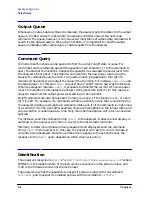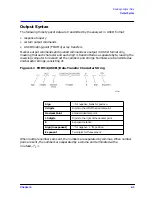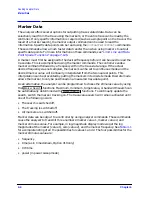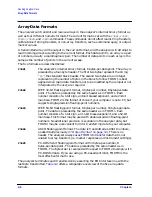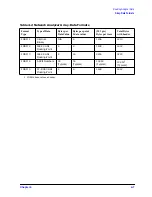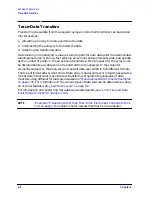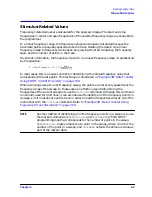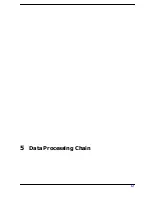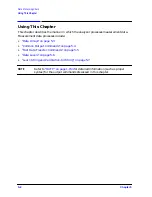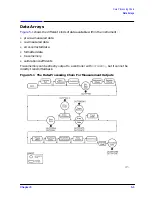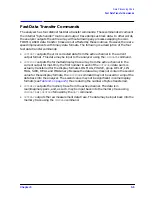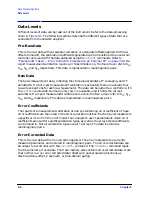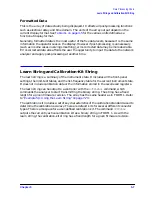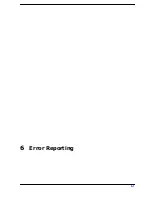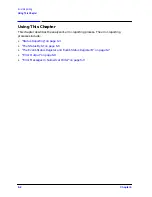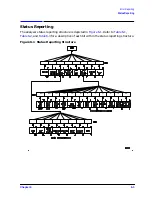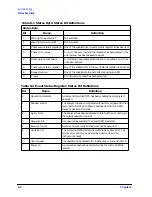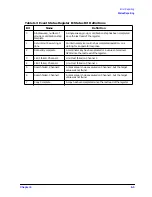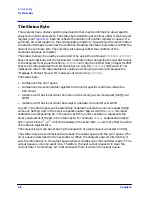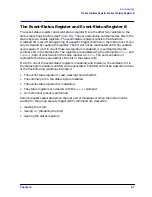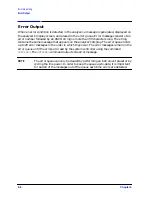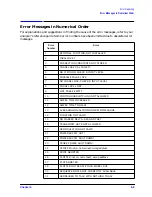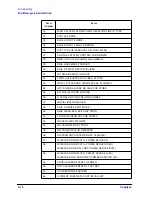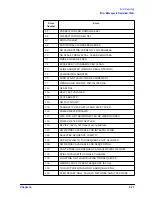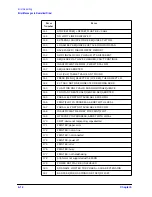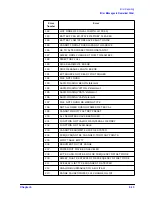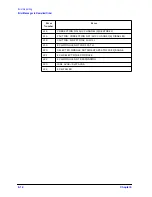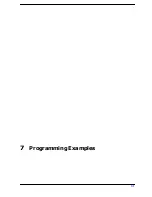
Chapter 5
5-7
Data Processing Chain
Learn String and Calibration-Kit String
Formatted Data
This is the array of data actually being displayed. It reflects all post-processing functions
such as electrical delay and time domain. The units of the array output depend on the
current display format. See
for the various units defined as a
function of display format.
Generally, formatted data is the most useful of the five data levels, because it is the same
information the operator sees on the display. However if post-processing is unnecessary
(such as in some cases involving smoothing), error-corrected data may be more desirable.
Error-corrected data also affords the user the opportunity to input the data to the network
analyzer and apply post-processing at another time.
Learn String and Calibration-Kit String
The learn string is a summary of the instrument state. It includes all the front-panel
settings, the limit-test tables, and the list-frequency table for the current instrument state.
It does not include calibration data or the information stored in the save/recall registers.
The learn string can be output to a controller with the
OUTPLEAS;
command, which
commands the analyzer to start transmitting the binary string. The string has a fixed
length for a given firmware revision. The array has the same header as in FORM 1. Refer
to
“Example 5A: Using the Learn String” on page 7-79
The calibration kit includes a set of key characteristics of the calibration standards used to
determine the calibration accuracy. There are default kits for several different connector
types. There is also space for a user-defined calibration kit. The command
OUTPCALK
outputs the currently active calibration kit as a binary string in FORM 1. As with the
learn string, the calibration-kit string has a fixed length for a given firmware revision.
Summary of Contents for 8719ES
Page 15: ...1 1 1 Alphabetical Command Reference ...
Page 293: ...2 1 2 Introduction to Instrument Control ...
Page 310: ...3 1 3 GPIB Programming ...
Page 334: ...4 1 4 Reading Analyzer Data ...
Page 343: ...5 1 5 Data Processing Chain ...
Page 350: ...6 1 6 Error Reporting ...
Page 364: ...7 1 7 Programming Examples ...
Page 502: ...A 1 A Preset Conditions ...
Page 517: ...B 1 B Command Listings ...

